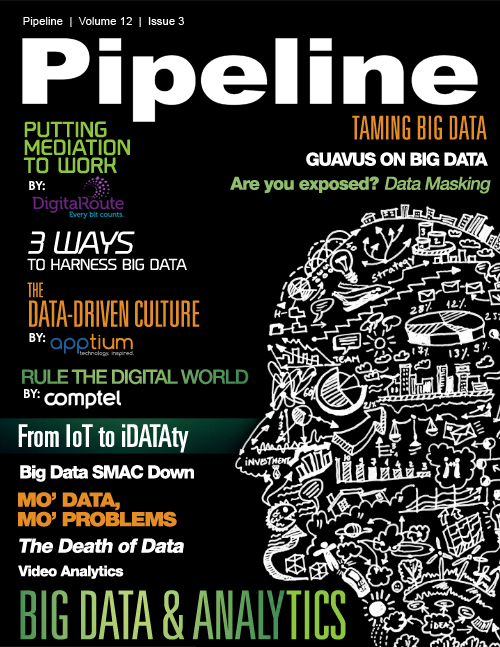Taming Big Data
By: Jesse Cryderman

Communications service providers (CSPs) all over the globe are seeing an unprecedented rise in volume, variety and velocity of information due to next generation mobile network roll-outs, increased use of smartphones, the rise of social media, and the impending explosion of the Internet of Things (IoT). There are two additional "V"s to consider as well: veracity and value.
(And to read more about these five "V"s in action, make sure to check out Dinesh Dhanasekharan and Kelly LeBoeuf's piece in this month's issue.)
Collectively, this outlines the big data challenge that CSPs face today. There is more data from more sources being generated faster every day, and CSPs must determine which bits and bytes have to most impact on business decisions. In this competitive climate, the CSPs who can tackle the big data challenge will differentiate from competitors, gain market share and increase revenue and profits with innovative new services.
Successfully taming data can help service providers transform operations to achieve better service and efficiency, deliver new, smarter services that generate new revenue smarter services that generate new sources of revenue, and make networks more agile and intelligent in order to deliver consistently high-quality customer experiences. Various vendors and solutions on the market can help CSPs achieve business objectives by applying big data solutions to key business use cases. These include proactive customer service, intelligent marketing, network analytics, and location-based services.
Proactive customer service
Mobile network operators have taken great strides to get smartphones into the hands of their subscribers, and this has paid off. Now, the majority mobile users use smartphones, and as a result, consume far more data than feature phone users. This has driven traffic levels through the roof, and, coupled with the highly-competitive mobile market, created a need for better customer care. In fact, as we previously discussed in Pipeline numerous times, the customer experience is (still) a major differentiating factor in telecommunications and one of the keys to success.
One way to leverage big data is through proactive intelligence. By combining multiple data streams into an analytical framework, service providers can understand patterns, behaviors, and service characteristics in exciting new ways, and build automated response solutions that head off problems before they occur. A perfect application of this is proactive customer service. By correlating network, application, location, and customer data, along with third-party, unstructured data sources, into a single tool, customer service agents can be presented with a solution before a customer utters a word. One service provider that Pipeline interviewed for this story is able to pull from 65 data sources in real-time, and display resolutions in less than half a second to care agents. This is clearly a competitive advantage, as it reduces handling times and, therefore, lowers costs and delivers rapid issue resolution to customers. This can be further extended to self-care portals, and even further modified to proactive self-care.
Ultimately, proactive solutions can reduce churn and improve margins, but in order for these outcomes to be realized, data from multiple sources must be accessible by analytic tools in real-time. Network data and customer data generally reside in separate silos within an operator organization, for instance. Part of taming big data is getting it all into the same cage, or at least getting all of it to play nice, like a circus ringmaster of sorts.





















